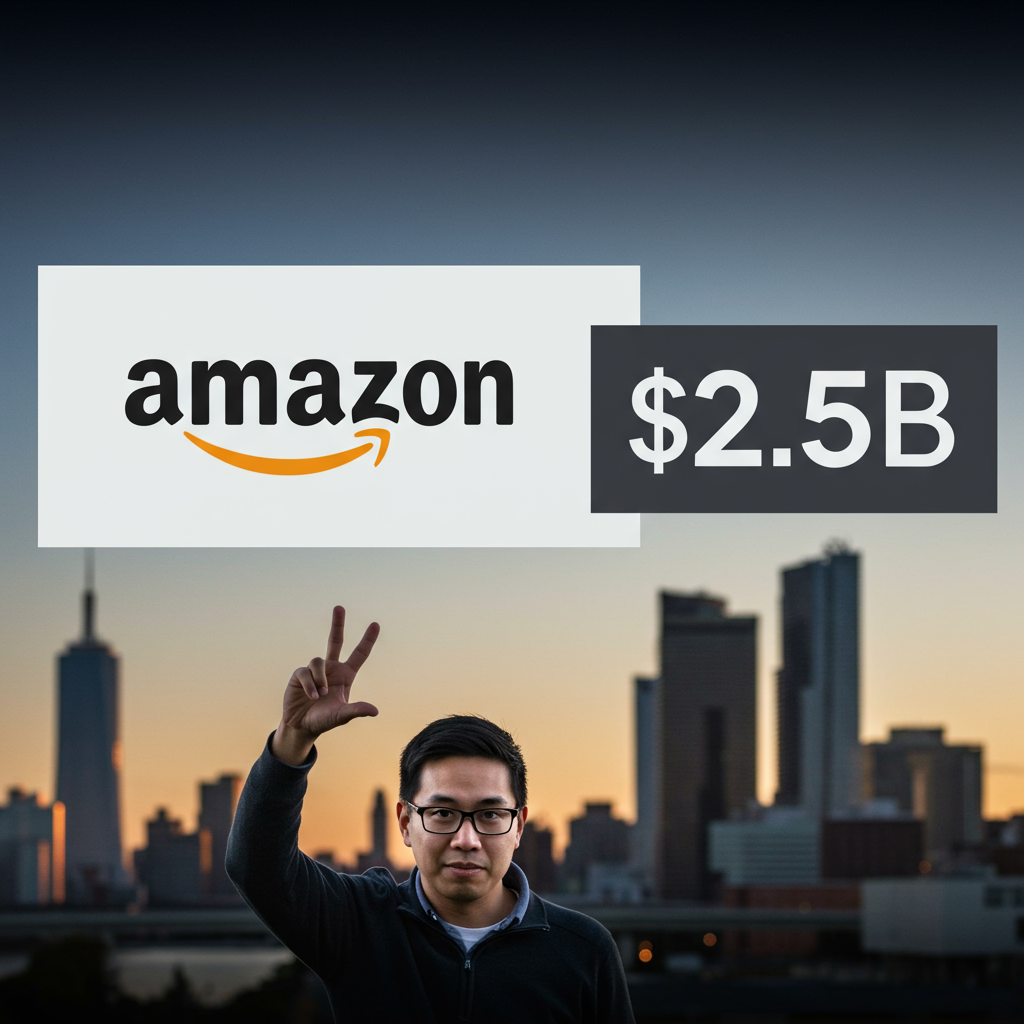In a landmark decision, Amazon has agreed to pay a substantial $2.5 billion settlement to the Federal Trade Commission (FTC). This historic agreement resolves allegations that the e-commerce giant used deceptive tactics to enroll customers in its Prime subscription service and then deliberately made it difficult for them to cancel. This settlement marks a significant moment for consumer protection in the digital age, shining a spotlight on “dark patterns” and manipulative user interface designs.
The FTC’s lawsuit, initially filed in June 2023 under the Biden administration, accused Amazon of intentionally creating confusing and misleading pathways. These designs allegedly tricked millions of consumers into signing up for Prime without their explicit consent or full awareness. Furthermore, the agency contended that Amazon engineered a convoluted cancellation process, forcing users through numerous unnecessary steps to end their subscriptions. This agreement was reached just as a jury trial was set to begin, aiming to avoid a potentially lengthy and damaging public legal battle.
The Core Allegations: Deceptive Enrollment and “Roach Motel” Tactics
The heart of the FTC’s case against Amazon centered on what regulators described as “sophisticated subscription traps.” These traps, often referred to as “dark patterns,” are subtle design tricks that nudge users into unintended actions. Amazon allegedly used these design elements to push consumers into Prime enrollment, frequently during routine checkout flows for other purchases. This led to many users unknowingly incurring recurring charges.
Prosecutors likened Amazon’s Prime model to a “roach motel”—easy to enter, but exceedingly difficult to leave. Internal documents reportedly revealed during the early stages of the trial indicated that some Amazon executives were aware that millions of Prime sign-ups were accidental. Despite this knowledge, the company allegedly prioritized revenue generation over consumer clarity and ease of exit. The cancellation process was intentionally buried behind multiple screens and prompts, designed to create friction and discourage users from unsubscribing.
Unpacking the $2.5 Billion Settlement
The substantial $2.5 billion settlement comprises several key components aimed at both penalizing Amazon and compensating affected consumers. Firstly, Amazon is mandated to pay a $1 billion civil penalty directly to the government. This figure stands as one of the largest civil penalties ever imposed by the FTC, underscoring the severity of the alleged violations and the regulator’s intensified focus on manipulative online practices.
Secondly, an additional $1.5 billion fund is dedicated to consumer redress. These refunds are earmarked for an estimated 35 million consumers who were impacted by Amazon’s “deceptive Prime enrollment practices.” This segment of the settlement aims to return billions of dollars directly into the pockets of American consumers who incurred unwanted charges between 2017 and 2024. This financial restitution represents a tangible victory for those who felt duped by the company’s subscription tactics.
FTC’s Stance: A Strong Message Against Exploitative Practices
FTC Chairman Andrew N. Ferguson commented on the outcome, stating that the evidence showed Amazon used “sophisticated subscription traps designed to manipulate consumers into enrolling in Prime, and then made it exceedingly hard for consumers to end their subscription.” He emphasized the dual impact of the settlement: “Today, we are putting billions of dollars back into Americans’ pockets, and making sure Amazon never does this again.” This statement highlights the commission’s commitment to combating “subscription traps” and ensuring fair consumer practices in the digital marketplace.
The settlement aligns with broader regulatory efforts by the FTC under Chair Lina Khan, a prominent critic of Big Tech’s market dominance. This case exemplifies the FTC’s evolving toolkit against tech giants, signaling a shift toward greater accountability in digital consumer interactions. The message is clear: companies employing deceptive designs to boost subscriptions face severe financial and reputational consequences.
Amazon’s Response and Future Commitments
In response to the settlement, Amazon issued a statement asserting that the company and its executives have “always followed the law.” They framed the settlement as an opportunity to “move forward and focus on innovating for customers,” while reiterating their commitment to making Prime sign-up and cancellation “clear and simple.” The company also affirmed its dedication to offering “substantial value” to its millions of loyal Prime members globally.
Despite denying wrongdoing, the agreement mandates significant changes to Amazon’s Prime enrollment and cancellation procedures. These injunctions go beyond mere financial penalties, requiring Amazon to overhaul its user experience to ensure greater transparency and ease of use for consumers. The company plans to roll out these required interface changes by early 2026, potentially leveraging AI-driven personalization to boost voluntary sign-ups in a compliant manner.
New Rules for Prime: Enhancing User Experience
As part of the comprehensive settlement, Amazon is now required to implement several crucial changes designed to prevent future deceptive practices. One significant mandate is the inclusion of a clear and unambiguous button for customers to decline signing up for Prime. This eliminates ambiguous options such as “No, I don’t want free shipping,” which previously acted as subtle nudges toward enrollment.
Furthermore, during the enrollment process, Amazon must now clearly disclose the full subscription cost, the billing date and frequency, and whether the subscription will auto-renew. The company is also obligated to detail the precise procedure for cancellation upfront. Crucially, Amazon is required to establish an easy-to-use cancellation method for Prime, ensuring it is as straightforward and accessible as the initial sign-up process. This “frictionless” cancellation button is a direct response to the “roach motel” accusations, aiming to balance ease of entry with ease of exit.
Broader Implications for the Subscription Economy
This settlement is not an isolated incident; it underscores a broader regulatory scrutiny on tech platforms’ user interfaces and subscription models. The FTC’s actions against Amazon could set precedents for how other companies across the “subscription economy” – from streaming services like Netflix and Spotify to software providers – handle recurring billing and user consent. It signals an increased focus on preventing “dark patterns” that manipulate consumer choices.
The penalty is among the largest ever levied by the FTC, drawing parallels to Facebook’s (now Meta’s) $5 billion privacy settlement with the agency in 2019. This demonstrates a clear trend of heightened enforcement against major tech entities. It also arrives amid heightened FTC activism, with other investigations into Amazon’s alleged monopolistic behaviors in online retail still ongoing.
The Road Ahead for Amazon
While the $2.5 billion fine is substantial, it represents only a fraction of Amazon’s vast annual revenue. Wall Street’s reaction to the news was modest, with Amazon shares dipping less than 1% in early trading, reflecting investor confidence in the company’s robust financials. Amazon’s Prime program, generating over $40 billion annually, remains a cornerstone of its ecosystem, underpinning services from expedited shipping to streaming.
Internally, Amazon reportedly viewed the settlement as a calculated move to mitigate reputational damage and avoid a potentially harsher court ruling. However, this FTC win may embolden similar complaints from state attorneys general or international regulators, particularly in the EU, where similar dark pattern rules are already in force. This settlement reinforces the FTC’s enforcement capabilities under the FTC Act, which prohibits unfair or deceptive acts in commerce, and could inspire new class-action lawsuits.
Frequently Asked Questions
What exactly were the “deceptive practices” Amazon used for Prime subscriptions?
Amazon was accused of employing “dark patterns” and confusing user interfaces to mislead consumers into signing up for Prime without their full knowledge or consent. This included subtle design tricks during checkout that made enrollment difficult to avoid. Additionally, the cancellation process was deliberately made complex, forcing users through numerous unnecessary steps and hidden menus, likened to a “roach motel” where leaving was difficult. The lawsuit, filed in June 2023, highlighted Amazon’s alleged prioritization of revenue over transparent user experience.
How will the FTC settlement change the Prime sign-up and cancellation process for consumers?
The settlement mandates significant changes to Amazon’s Prime user interface. For sign-ups, Amazon must now include a clear, unambiguous button for customers to decline Prime enrollment, replacing misleading options like “No, I don’t want free shipping.” During enrollment, full transparency is required regarding subscription cost, billing dates, auto-renewal status, and cancellation procedures. Crucially, Amazon must also create an easy-to-use cancellation method, as straightforward as the initial sign-up process, making it simple for members to opt out. These changes are expected to roll out by early 2026.
What does this Amazon FTC settlement mean for other subscription services and the future of consumer protection?
This landmark $2.5 billion settlement sets a significant precedent for the entire “subscription economy.” It sends a clear message that regulators, particularly the FTC, are actively targeting “dark patterns” and manipulative design tactics used to trap consumers in recurring subscriptions. Other companies offering digital subscriptions may face increased scrutiny regarding their enrollment and cancellation processes. This action signals a broader push for greater transparency and ease of exit in online services, potentially inspiring similar complaints from state attorneys general or international regulators, particularly in regions like the EU that already have strong dark pattern regulations.
Conclusion
The $2.5 billion settlement between Amazon and the FTC represents a pivotal moment in the ongoing battle for consumer rights in the digital age. It underscores the growing regulatory focus on transparency, consent, and user experience, particularly concerning subscription services. While Amazon maintains it has always followed the law, the mandated changes to its Prime enrollment and cancellation processes will undoubtedly enhance clarity and control for consumers.
This agreement not only puts billions back into the pockets of affected Americans but also sends a resounding message to the broader tech industry: manipulative “dark patterns” will not be tolerated. As the digital landscape continues to evolve, this landmark decision solidifies the FTC’s commitment to ensuring that digital commerce operates fairly and ethically, ultimately fostering greater trust and accountability between platforms and their users.




